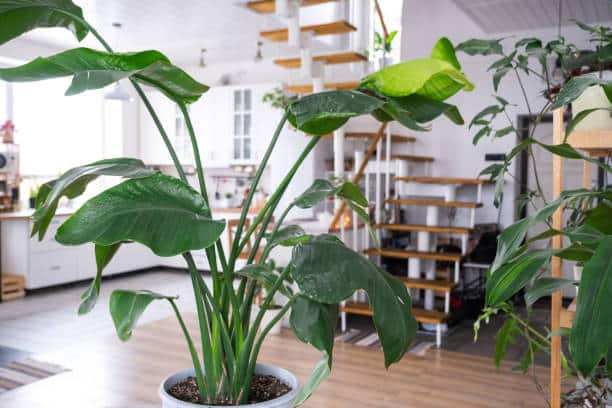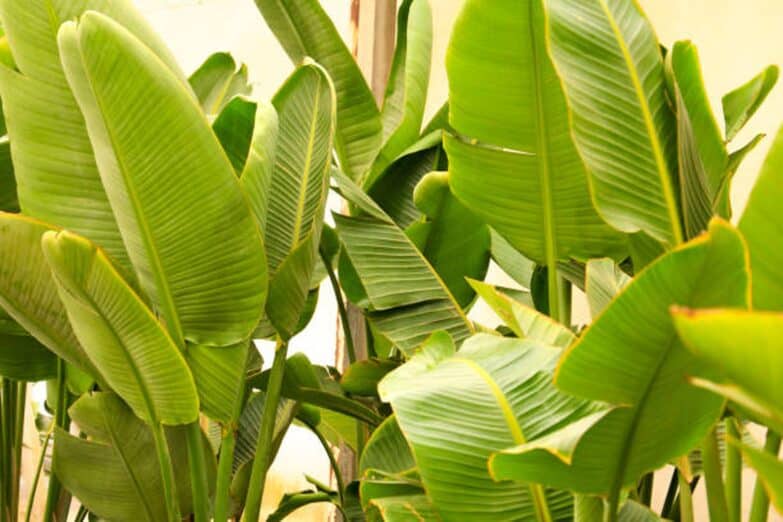Strelitzia Nicolai, commonly known as the Giant White Bird of Paradise, is a stunning tropical plant that can transform any indoor space into a lush, vibrant jungle. With its striking foliage and impressive size, this South African native adds a dramatic and exotic touch to your home or office. In this step-by-step guide, we will delve into the world of Strelitzia Nicolai, exploring its origins, characteristics, and the essential steps to growing and maintaining a thriving indoor jungle.
The Origins and Characteristics of Strelitzia Nicolai
A South African Beauty
Strelitzia Nicolai is native to the coastal regions and subtropical forests of South Africa, where it thrives in warm, moist conditions. In its natural habitat, the plant can grow up to 20 feet tall and spread up to 10 feet wide, making it a striking presence in the landscape. The plant is a close relative of the more commonly known Strelitzia reginae, or the Orange Bird of Paradise, but is characterized by its larger size and distinctive white flowers.
Distinctive Features of Strelitzia Nicolai
The Giant White Bird of Paradise is known for several unique features that set it apart from other indoor plants:
- Bold Foliage: Strelitzia Nicolai boasts large, paddle-shaped leaves that can reach up to 6 feet in length, providing a lush and dramatic backdrop for other plants in your indoor jungle.
- Striking Flowers: Although less common in indoor cultivation, Strelitzia Nicolai produces striking white and blue flowers that resemble a bird in flight, giving the plant its common name, Giant White Bird of Paradise.
- Impressive Size: When grown indoors, Strelitzia Nicolai can reach heights of 8 to 10 feet, making it a captivating focal point in any space.
Growing and Caring for Strelitzia Nicolai
Light Requirements
Strelitzia Nicolai thrives in bright, indirect light, although it can tolerate some direct sunlight. Place your plant near a south or east-facing window, or use a sheer curtain to filter the sunlight if the plant receives too much direct sun. If your Strelitzia Nicolai starts to show signs of leggy growth or smaller leaves, it may need more light.
Temperature and Humidity
As a tropical plant, Strelitzia Nicolai prefers warm temperatures and moderate to high humidity. Maintain indoor temperatures between 65 to 85 degrees Fahrenheit (18 to 29 degrees Celsius) and avoid exposing the plant to temperatures below 55 degrees Fahrenheit (13 degrees Celsius). Cold drafts or sudden temperature changes can cause leaf damage or stress to the plant.
To maintain adequate humidity, place your Strelitzia Nicolai near a humidifier, use a pebble tray filled with water, or mist the leaves regularly. The plant will appreciate the added moisture, especially during the drier winter months.
Watering and Fertilizing
Watering is a crucial aspect of Strelitzia Nicolai care. The plant prefers consistent moisture but should never be left sitting in soggy soil, which can lead to root rot and other issues. Allow the top inch or two of soil to dry out between waterings, and then water the plant thoroughly until water drains out of the bottom of the pot. Be sure to use a well-draining soil mix and a container with drainage holes to prevent waterlogged conditions.
Fertilize your Strelitzia Nicolai every 4-6 weeks during the growing season (spring and summer) using a balanced, water-soluble fertilizer diluted to half strength. This will promote healthy growth and maintain the plant’s vibrant foliage. During the plant’s dormant period (fall and winter), reduce fertilization frequency to once every 8-10 weeks.
Pruning and Repotting
Pruning is essential to maintain Strelitzia Nicolai’s shape, encourage bushier growth, and promote overall plant health. After the plant’s active growing season, use clean, sharp pruning shears to trim back any long or unruly branches, remove dead or damaged leaves, and shape the plant as desired. Be cautious not to remove more than one-third of the plant’s foliage at a time to avoid causing undue stress.
Repotting your Strelitzia Nicolai every 2-3 years can help support its rapid growth and prevent it from becoming root-bound. Choose a new pot that is 2-3 inches larger in diameter than the current pot, and ensure it has adequate drainage holes. Gently remove the plant from its current container, trim away any damaged or circling roots, and place it in the new pot filled with a well-draining soil mix. Water thoroughly after repotting to help the plant settle into its new home.
Troubleshooting Common Issues with Strelitzia Nicolai
Yellowing Leaves
If your Strelitzia Nicolai’s leaves begin to yellow, it may be a sign of overwatering or poor drainage. Ensure that you are allowing the top inch or two of soil to dry out between waterings, and check that your container has proper drainage holes. If necessary, repot the plant in a well-draining soil mix to improve drainage.
Leaf Curling or Browning
Leaf curling or browning can be a result of low humidity, underwatering, or exposure to cold drafts. Increase humidity around the plant using a humidifier, pebble tray, or by misting the leaves. Make sure the plant receives adequate water and is not exposed to cold drafts or sudden temperature fluctuations.
Pests
Strelitzia Nicolai can be susceptible to common pests like spider mites, mealybugs, and scale insects. Regularly inspect your plant for signs of pests, and maintain proper watering and environmental conditions to keep the plant healthy and less vulnerable to attacks. If you do notice pests on your Strelitzia Nicolai, consider using non-toxic methods to control the infestation, such as washing the plant with a gentle stream of water, wiping the leaves and stems with a damp cloth, or applying insecticidal soap or neem oil, following the manufacturer’s instructions.
Styling Your Indoor Jungle with Strelitzia Nicolai

Complementary Plants
Strelitzia Nicolai makes a stunning focal point in your indoor jungle. Pair it with other tropical plants to create a lush and vibrant display. Some complementary plants to consider include Monstera deliciosa, Philodendron, Calathea, and various ferns. These plants will appreciate the same light, temperature, and humidity conditions as your Strelitzia Nicolai, making them ideal companions.
Creating Vertical Interest
Strelitzia Nicolai’s impressive height makes it an excellent choice for creating vertical interest in your indoor space. Place it in a corner or near a large window to draw the eye upwards and create the illusion of a taller room. You can also use hanging plants or shelves with trailing plants to emphasize the vertical aspect of your indoor jungle.
Incorporating Decorative Elements
In addition to pairing your Strelitzia Nicolai with other tropical plants, consider incorporating decorative elements to enhance the aesthetic of your indoor jungle. Use pots and planters with varying colors, textures, and materials to add visual interest and create a cohesive theme. You can also include decorative accents like statues, lanterns, or wall art that complement the tropical atmosphere.
Playing with Light and Shadow
The large leaves of Strelitzia Nicolai can create interesting light patterns and shadows in your indoor space, especially when placed near a window. Experiment with the placement of your plant to maximize the interplay of light and shadow, adding depth and visual intrigue to your indoor jungle.
Conclusion
Strelitzia Nicolai, the Giant White Bird of Paradise, is a captivating addition to any indoor space, offering a lush, tropical ambiance with its bold foliage and impressive size. By following this step-by-step guide, you can successfully grow and maintain a thriving Strelitzia Nicolai in your indoor jungle, creating a breathtaking and inviting environment for you and your guests. Embrace the beauty and drama of this stunning plant, and transform your home into a vibrant, exotic oasis.

